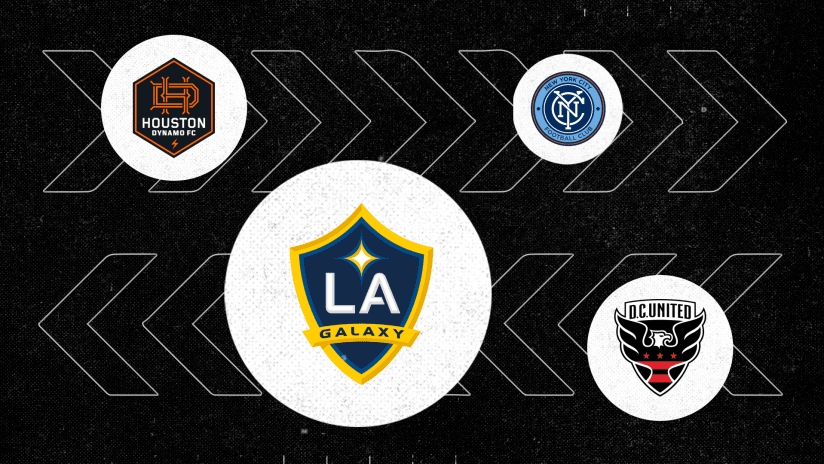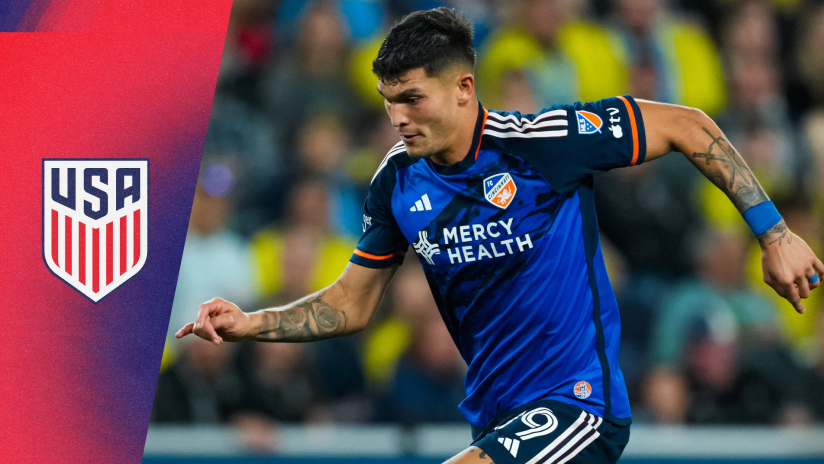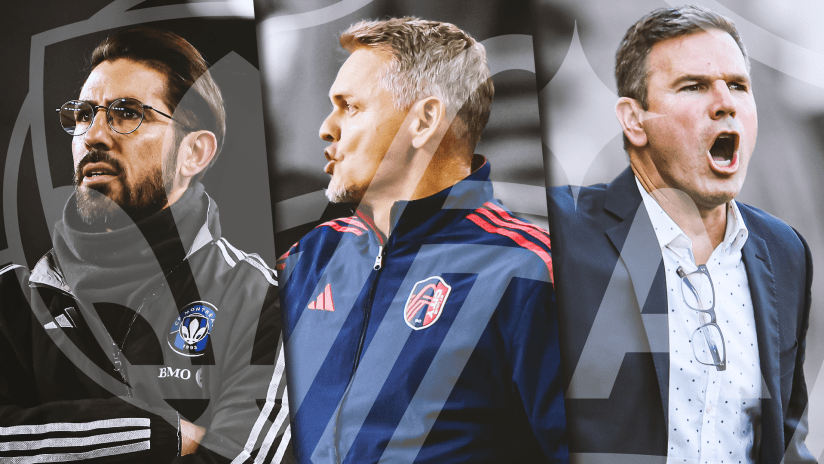It was as disastrous a start imaginable for the US men's national team Wednesday evening in Columbus, Ohio.
Head coach Gregg Berhalter's team conceded within the first minute to Costa Rica, an undermanned, fatigued and, erm, experienced squad already expected to bunker and frustrate, all under the context of the USMNT coming off a hugely disappointing performance and result against Panama a few days prior. It felt eerily similar to how the third game of the September window started, conceding against Honduras after a particularly uninspiring second game. Against Honduras, they made sweeping changes at halftime and won 4-1.
Halftime was a long way away at Lower.com Field. How would a historically young team, with an average age just a shade over 22 years old (!) and all 11 starters having made their World Cup qualifying debuts either last month or this window, react?
“We weren’t nervous at all," forward Tim Weah told media after the game.
It showed.
As Weah would later describe, the USMNT dominated the first half and the second half. Maybe a 2-1 win was a little too close for comfort or a bit flattering to Costa Rica, but the result was ultimately all that mattered. The United States wrapped the October international window sitting second in Concacaf's Octagonal on 11 points after six games, trailing only Mexico (14 points) and a point ahead of Canada.
"Mentally we were always there, even after we conceded," Weah said. "It is what it is, we just had to stay focused. For me, I felt like we dominated the first half. Dominated the second half. Then we got the reward for it, so that’s good.”
This young group is off to a decent start, albeit it with more than a few nervy moments.
“That (average age is) basically unheard of in international football,” Berhalter said. “If you go look at the Germanys, the Frances, Brazils. They’re basically playing 28-year-old, 29-year-old teams. So for us to be navigating through these CONCACAF qualifiers – which is a bear, a monster – with this group and the amount of poise they showed… again, I’m proud of the effort. The guys showed a lot of poise and they’re growing, they’re growing as a team.”
World Cup qualifying is a zero-sum game. In the macro view, it's binary: Did you qualify or did you not? A million little decisions and moments go into that, and each moment and decision gets dissected and changes the calculus for the next decision or how the next moment is prepared for.
“The main goal, the to-do list, is to qualify for the World Cup and we’re not there yet,” Berhalter said. “And we can’t rest until we’re there."
The USMNT still have both games against Mexico remaining in their final eight tests, as well as trips to Canada and Costa Rica. Those four fixtures may arguably be the most difficult quartet of the 14, and if not, they're darn close.
Nothing is sorted, nothing is set for Qatar 2022, but for a campaign that has twice flirted with real peril while being guided by a squad of youngsters mostly going through these experiences for the first time, 11 points after six games is a solid start.
“All of World Cup qualifying is difficult, all of World Cup qualifying is challenging," Berhalter said. "Sometimes I think people forgot that, People think it’s a cakewalk. People think we’re going to play the youngest team in the history of US Soccer and we’re going to breeze through these games. That is not realistic.”
Stock up
Musah made his WCQ debut this window after missing out in September as he recovered from injury. On paper, most were desperate to see what a Tyler Adams-Weston McKennie-Musah midfield would look like and it did not disappoint. He wasn't perfect – he wasn't great against Panama – but it seems pretty clear that midfield trio is as strong as fans hoped it would be.
“His talent is off the charts," Berhalter said. "I know it’s really easy to talk highly about a guy when they play well and you win. But I’m telling you, the kid is a player.”
Musah offers dynamism and ball progression that few players in the pool, if any, can match. The 18-year-old Valencia midfielder is living up to the hype.
Zimmerman wasn't even on the original 27-man roster, replacing an injured Tim Ream. Despite that, he started the first game. He helped anchor a 2-0 win over Jamaica. Then he started the second game, the closest thing to a good performance anyone had against Panama. Then he was a late sub against Costa Rica, tasked with helping shut the game down and wrapping up all three points.
Things change quickly. His aerial ability is extremely useful both in attacking and defending set-pieces. It feels like the USMNT are due for a set-piece goal between Zimmerman or Miles Robinson.
At the Nations League tournament in June, Aaronson came off the bench in the semifinal and didn't appear in the final. That was the final competitive match he was available for ahead of WCQs (as he wasn't on the Gold Cup squad).
It feels kind of unfathomable just a couple months later that the USMNT would have a game of consequence in which Aaronson wouldn't get at least a sizable role off the bench, right?
In September he proved he was a difference-maker for the USMNT. In October, without Christian Pulisic and Gio Reyna, the Philadelphia Union product took another step forward in his maturation by showing he could handle more responsibility.
Stock down
Brooks missed this window through a late injury.
He wasn't convincing in September, with his last contribution being removed at halftime down 1-0 to Honduras before the USMNT scored four unanswered second-half goals. Ahead of WCQs, he was easily the first-choice starter in central defense, though with a few questions. He still may be now, but Zimmerman looked really good. Chris Richards is coming along. So is Mark McKenzie. Matt Miazga is getting consistent La Liga minutes. This isn't a foregone conclusion like it used to be.
Lletget caught a lot of heat for his performance against Panama, and rightfully so. Whether it was planned or not, Lletget was left of the matchday roster for game three.
The LA Galaxy midfielder has been among the most-used players in the Berhalter era, so one bad game won't cost him dearly – nor should it. But behind the starting trio of Musah, Adams and McKennie, this opens the door for Gianluca Busio, Luca de la Torre and others to take some minutes.
Shaq Moore's lone start of the window was the ill-fated game against Panama and he, like the rest of those on the field, didn't impress.
Moore seems to be around the bubble in this player pool. He was a pleasant surprise at the Gold Cup, excelling after expecting to be second-choice. He wasn't called into the USMNT's September squad but made it for October.
With Joe Scally breaking out for Borussia Monchengladbach, one would expect Moore to make way for the New York City FC product's first call-up. Right back is deep, too. Reggie Cannon and Bryan Reynolds factor somewhere on the depth chart behind Sergino Dest, DeAndre Yedlin, Moore and Scally.
Post-window depth chart

Disclaimer: This is so fluid, and we'll disagree a bunch. With all the squad rotation necessary, a general picture is more important than getting stuck into whether one guy is a 2nd or 3rd, etc., when there'll be a ton of playing time to go around. For the sake of not having every roster spot go 10-deep, I tried to keep every guy to just one position, but that was easier said than done. So that attempt failed. More guys than I listed can, obviously, play multiple roles.
- Is Brooks still the first-choice starter next to Miles Robinson? I don't feel confident about that at all. Then again, Zimmerman wasn't even originally called into the October squad and Richards didn't get his first minutes until game No. 3. Think we'll continue to see a lot of changes in defense. Brooks is on thin ice if he's still indeed the starter and instead of looking for who the best partner is for him, it's a competition to see who's best next to M. Robinson.
- Adams is so good and so important to this team.
- A core of the best XI is starting to form, which is good news.
- I broke my own "keeping guys in one position" rule just because left back is light behind Antonee Robinson and George Bello, and Dest has played a bunch on that side under Berhalter while Scally is very much capable, too. Then I broke it again for James Sands and Busio because I can't even listen to my own directions.
- Busio hasn't really played the 6 lately for the USMNT nor Venezia, so maybe he's more firmly a No. 8 for this team right now. That's where he entered off the bench against Costa Rica. Guess we'll learn more in November.
- What will the minutes split at goalkeeper between Matt Turner and Zack Steffen look like over the next eight games?
- Picking two of Gyasi Zardes, Josh Sargent, Jordan Pefok, Daryl Dike or Matthew Hoppe behind Ricardo Pepi at center forward for the November squad is going to be really difficult, though it seems as if Zardes has established himself as the No. 2 option.
- How far away is Julian Green, Djordje Mihailovic or Paxton Pomykal from pushing for one of the final roster spots at central midfield? Maybe closer than we think.
- Jordan Morris will soon make his return from injury. November will surely be too soon, but keep this in mind for January.
- Sam Vines returned to training as well. Maybe he's in play for a November call-up.

















